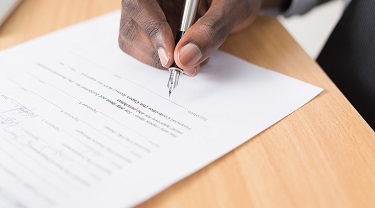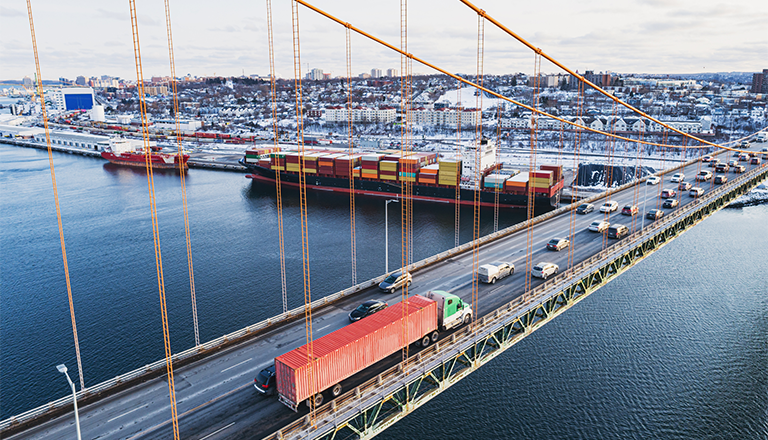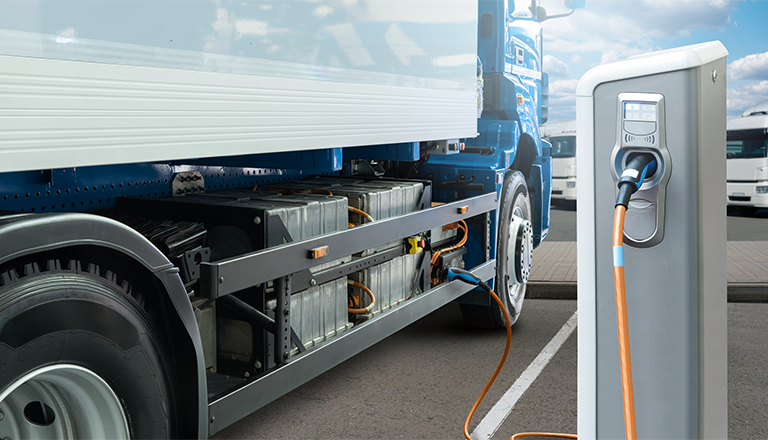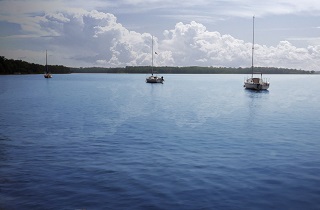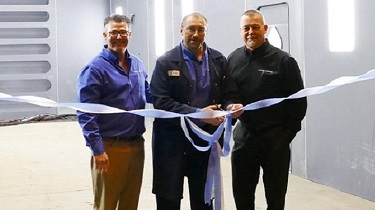Q: We ship goods by truck from our plant to a buyer's plant in the United States. We pay the freight, using the DAP Incoterm at the buyer’s plant. Where does the title transfer?
A: Delivered at place (DAP) happens when the goods are placed at the disposal of the buyer, ready for unloading at the named place. In this case, delivery happens at the buyer’s plant in the United States. All the costs, risks and obligations, up until that point, are on the seller. Note: Incoterms don’t address the transfer of title.
—Lora Rigutto Vigliatore
Q: Is the use of Incoterms mandatory, or voluntary?
A: There’s a misconception that Incoterms are mandatory, or legally required. They’re neither. But they’re highly recommended for use in contracts for the sale of goods to avoid miscommunication.
It’s also very important to explicitly state the version of the Incoterms rules in the sales contract. If you only specify the Incoterm, then by default, the 2020 rules will apply. It’s important to note that if a contract for sale was created prior to Jan. 1, 2020, then the former 2010 rules would apply for any Incoterms mentioned in that contract.
The correct way to include all necessary information is to state the Incoterm, name the place of delivery or destination (or port, if applicable), and the exact location.
Using the previous DAP question as an example, don’t simply state the city as the place of destination. Specify an exact location in that city by including the address of the warehouse or plant and unloading bay number.
—Lora Rigutto Vigliatore
You should also check out
Expand your understanding of the 11 universal trade terms used in global sales contracts and how they impact your business operations.
Q: We import wooden wheels for toys. We paint, finish and glue those wheels to the products we make. Have those wheels changed enough to be considered “Made in Canada?”
A: For preferential origin purposes, start with the toy you’re making and ask, “Where do I want to ship this toy?” Then, see if a free trade agreement (FTA) is applicable. For example, if you’re going to ship to Vietnam, or the U.S., you’ll have to look up the tariff classification and rules of origin from the applicable FTA. The classification of the finished product is, in a sense, the address for the rule of origin. It could be:
- a tariff-shift rule, a change from a chapter to another chapter in the customs tariff
- a process rule that actually tells you what you have to do
- a value-added rule, where it says at least 45% of the toy has to be produced in Canada
- a combination of rules
I would say that it’s unlikely that the activities you mentioned would result in classifying it as an originating product. Of course, we’d have to look at the bill of materials for the whole toy. The wheels might only be, let’s say 5%, of the value of the whole toy. Where do the other parts come from?
In terms of whether painting, finishing and adding glue are originating activities, there are provisions in FTAs that define non-originating activities. Your activities would likely be defined as non-originating. They’d probably not change the wheel, but we’d have to look at the bill of materials for the whole toy to come up with the answer if the finished toy originates or not. If the applicable rule of origin is a tariff-shift rule, and you’re not sure how to classify your finished toy, or the imported inputs to make it, remember to check out Global Affairs’ Tariff Finder. It’s a great system that uses artificial intelligence to classify goods under the Harmonized System (HS) code.
–Brian Staples
Q: We’re going to start exporting utility vehicles to Mexico and I want to know how to comply with Canada’s export declaration. Do I just fill it out and send it to my customs broker, or do I have to get a stamp from the Canadian Chamber of Commerce (CCC)?
A: If you're shipping to Mexico, your goods may fall under the Canada-United States-Mexico Agreement (CUSMA), so you wouldn’t need a Chamber stamp. The CCC only certifies certificates of origin for non-preferential treatment nations. We don’t get involved with anything that has to do with a free trade agreement and the new CUSMA states that exporters can now provide a certificate of origin declaration in the export documentation. But always check and consult with your customs broker on any of those matters.
–Anick de Sousa
Note: Starting Sept. 30, 2020, exports are declared electronically with the new Canadian Export Reporting System (CERS).
Q: We have an advanced ruling on an item that it was manufactured in Taiwan. Can we export it to the U.S. or Mexico using the same HS classification?
A: HS codes (Harmonized Commodity Description and Coding System) are only harmonized to the first six digits. Anything after that is country-specific. I can’t say with complete certainty that the United States or Mexico would apply the same HS code. In any case, the advance ruling is specific to the customs authority in Taiwan. You could request an advance ruling from the U.S. or Mexico to see how the goods would be treated under CUSMA for either market, or the CPTPP (Comprehensive and Progressive Agreement for Trans-Pacific Partnership) in Mexico. For Mexico, you might ask: Which agreement should I use? This is up to you. Generally, most tariffs were eliminated under the former North American Free Trade Agreement (NAFTA), and CUSMA maintains these benefits. An advantage to using CPTPP is that the importer, exporter, or producer can certify the good and/or request the advance ruling.
–Jordan Turley
A: Just to support what Jordan was saying, you may not be able to use the same HS code because the classification sovereignty lies in the country of import. I suggest you look at the CROSS ruling system (Customs Rulings Online Search System) on the U.S. Customs and Border Protection webpage. It’s a beautiful system with thousands of rulings on products. It could be that your product has already been ruled on in the U.S. and that ruling is publicly available. Again, the classification is up to the country of import, so I would follow Jordan’s advice and request an advanced ruling from the U.S.
—Brian Staples
A: Remember to get your customs broker involved anytime you have specific HS codes or FTA agreements questions. Learn more about the work they do.
—Emiliano Introcaso
Q: Where do we get certificates of origin for our Canadian-made natural health products? We're trying to export to Poland. How do I know if my certificate of origin needs CCC certification?
A: Check with your buyer because they might be able to tell you if there’s a Canadian Chamber of Commerce (CCC) stamp requirement. You need to be careful with health products because you may also need a certificate of free sale. The chamber doesn’t provide or certify these documents. There’s a handful of associations appointed by Health Canada to provide them, with access to the full registry of products that are freely sold in Canada. We have strict regulations in Canada, which means that the products made and sold here are generally safe, but other countries don’t necessarily have the same regulatory systems. Oftentimes, they’ll say, “Well, if it’s good enough for the Canadian market, then we’re OK with it.” But it doesn’t mean that your product necessarily meets their regulatory requirements. For natural health products, you should check with Consumer Health Products Canada. Other sources for certificates of free sale include:
- Cosmetics Alliance Canada (CAC)
- Canadian Health Foods Association (CHFA)
- Canadian Food Inspection Agency (CFIA)
In order to know if your certificate of origin, you’ll need a CCC certification. It’s best to consult with your buyer or customs broker. That said, countries that definitely require it are China and most countries in the Middle East.
—Anick de Sousa
You should also check out
Less waste, higher efficiency among ESG benefits.
Q: If a container arrives at the importer’s door and the floor of the container is damaged before or after the unloading, who’s responsible for the actual damage?
A: It depends on which rule was used to determine when the delivery took place. Let’s say the two parties in a contract used FOB (free on board). If the goods were in good order when they were loaded onto the vessel, then delivery is deemed to have taken place, and the transfer of risk and costs against loss or damage passes to the buyer at that point (port of departure). If, on the other hand, the parties in a contract used DPU (delivered at place unloaded) at the buyer’s factory, the seller is responsible for unloading the goods at the buyer’s factory and the goods must be in conformity with the contract of sale. Transfer of risk against loss or damage takes place only when the goods are unloaded.
—Lora Rigutto Vigliatore
Q: Which Incoterms are more commonly used, or less used, and why?
A: The two Incoterms most commonly misused:
1. Ex Works: This term means that the seller will make the goods available to the buyer at the seller’s warehouse. It doesn’t include an obligation to load the goods. Oftentimes, problems can arise because the buyer’s expectation is that the seller will load the goods onto the buyer’s mode of transportation. In that case, the two parties should use FCA (free carrier), whereby the seller is obligated to load the goods onto the buyers mode of transportation, or the seller’s means of transport, and deliver to another named place, ready for unloading by the buyer.
2. FOB is commonly misused by new exporters. It’s actually a Maritime-only term. I’ve seen FOB Winnipeg and FOB Saskatoon, where obviously there are no significant waterways to be used for the transport of goods. When using FOB, the port of departure is required. Delivery is considered to have taken place when the goods are onboard the vessel at the named port.
—Lora Rigutto Vigliatore
Q: Where can I find the Incoterms 2020 book?
A: You can buy it on the International Chamber of Commerce's website. If you attend in-person training courses, the book is provided for free. Those taking the online training through Forum for International Trade Training (FITT), get a free e-book.
Q: Can the declaration of origin provided by the supplier be insured? For example, if you rely on information provided by your supplier, can you insure against incorrect declarations of origin?
A: The Canadian Chamber of Commerce (CCC) certifies certificates of origin and we always rely on the declaration from the exporter. Of course, we don’t stop there if the goods are from another source. In that case, we’d ask for a declaration from the supplier. In terms of insurance, I’m not sure if that’s something you can insure, but if you’re the one making the declaration, you’re definitely responsible for. To protect yourself, make sure you have extensive Errors and Omissions coverage included with your business insurance. That way, if you make a wrongful declaration to customs based on incorrect information provided by a supplier, you can hopefully recover some of your losses. This is what we do at the chamber, as we’re constantly relying on second- or third-party confirmations of origin when certifying documents.
—Anick de Sousa
A: It’s important to speak to your supplier to explain to them what you need in order to claim preference at the time of entry. In this case, it would be the applicable HS classification in Canada and the applicable rule of origin. This information, as well an outline of the activities that they would have to undertake to have full and proper supporting origin documentation and data, would become part of your purchase order. Then, you could make these activities subject to a performance bond. From the perspective of an importer, we’re trying to issue instructions to the supplier, to the exporter, and say, “This is what you need to do in order to give me a proper certificate of origin for preferential purposes and make it performance-bond liable.” They’d, at least, have to do those steps. Whether they do them properly, that’s another thing.
—Brian Staples
EDC’s Export Help Hub provides expert answers to the most frequently asked trade-related questions. Create a free MyEDC account for the answers to these questions about incoterms, or ask an advisor a question of your own.
1. What are Incoterms?
2. Of the 11 Incoterms—universal terms used in international sales contracts—available, which one applies to multimodal transport?
3. Who is responsible for paying import costs and customs duties?
Expert panel:

Anick de Sousa
Director, Services
Canadian Chamber of Commerce (CCC)

Brian Staples
CEO
Trade Facilitation Services

Jordan Turley
Canadian Trade Commissioner Service (TCS)
Global Affairs Canada

Lora Rigutto Vigliatore
Forum for International Trade Training (FITT)

